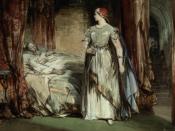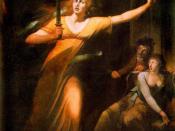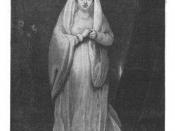Hiding the truth and speaking falsely is a theme that has been thoroughly explored by many artists and writers, with a similar conclusion for most of them. Deceit emerges as an evil device, a dark and never-ending tunnel from which it is difficult to get away, for a lie leads into another one, the same way as a step leads into another. Nonetheless, despite initial appearances and all the twists and turns the tunnel might have, it finally ends abruptly, and light, that is to say truth and virtue, prevails. That is what seems to happen in the plays Macbeth, by William Shakespeare, and The Crucible, by Arthur Miller.
Abigail Williams is a main character in The Crucible who seems to follow the advice that Lady Macbeth gave his husband regarding how to lie. Abigail actually ÃÂlook[s] like the innocent flowerÃÂ, for she is a young girl whom nobody seems to mistrust, and everybody refers to her and her friends as ÃÂthe girlsÃÂ, something which adds to her the power of innocence.
However, she is ÃÂthe serpent under [the flower]ÃÂ, for she takes advantage of how people trust in her and uses this in her favour to attack with her lies. Abigail knows that they will trust her because she ÃÂbear[s] welcome in [her] eye[s]ÃÂ, and therefore, they believe her when she charges upon Mary Warren: ÃÂOh, Mary, this is a black art to change your shape. No, I cannot, I cannot stop my mouth; itÃÂs GodÃÂs work I doÃÂ.
Furthermore, both Abigail and Lady Macbeth are two very powerful women who make use of their authority to incite other people into lying. Lady Macbeth convinces Macbeth to kill Duncan, while Abigail forces the other girls into lying by threatening them, for she tells them that if any of them...


